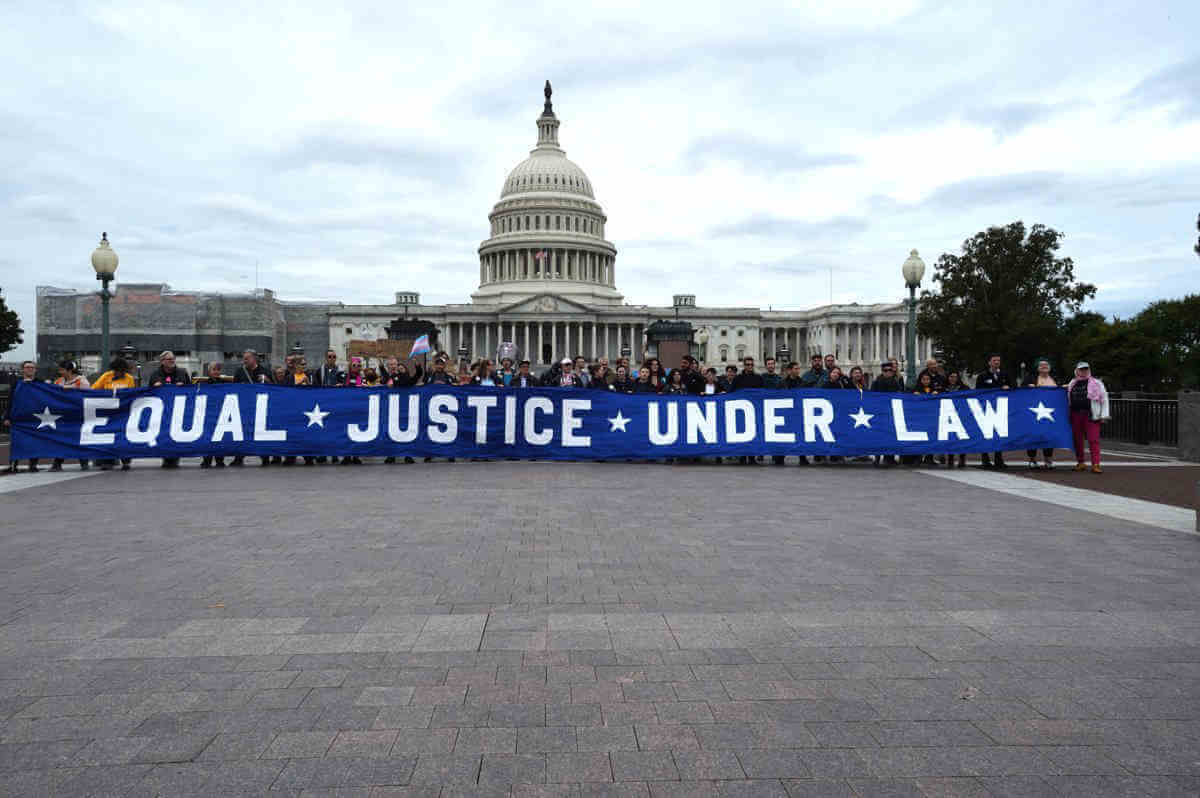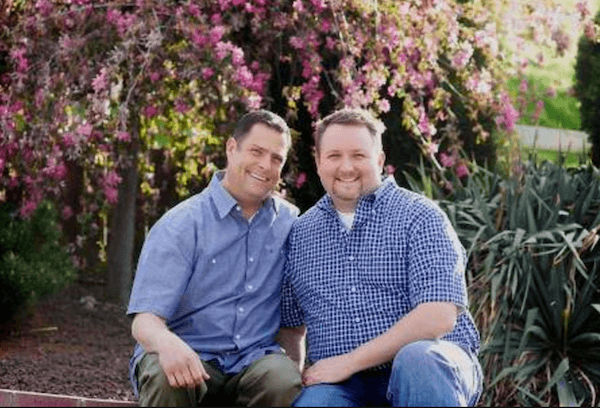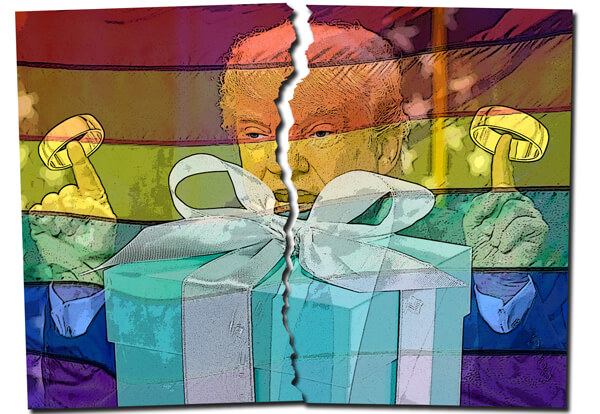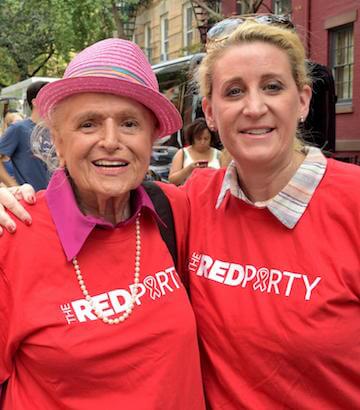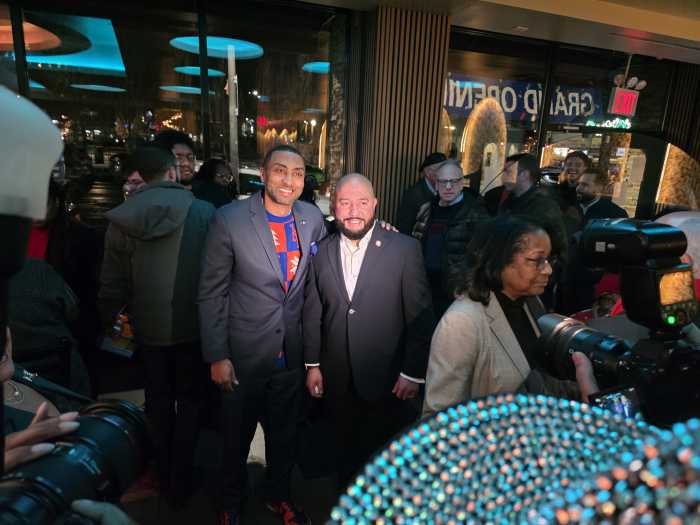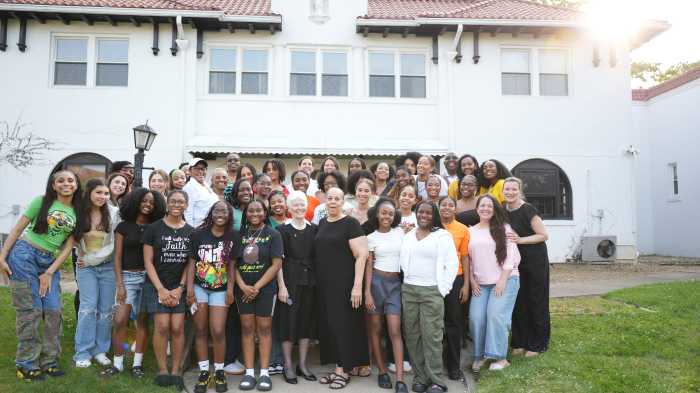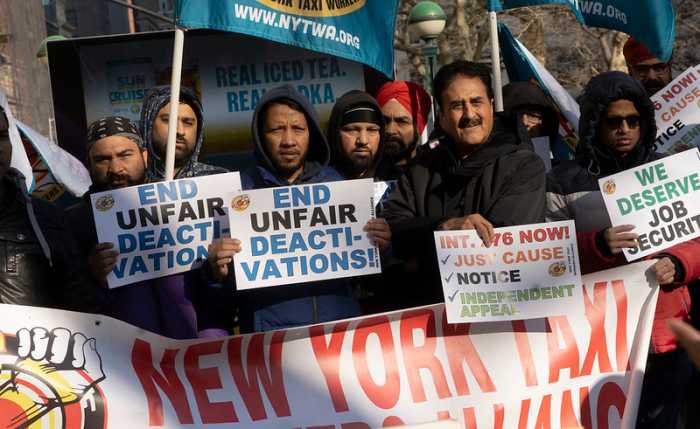The Supreme Court’s June 15 ruling that Title VII of the 1964 Civil Rights Act bans employment discrimination against people because of their sexual orientation or gender identity was the fifth landmark in a chain of important rulings dating back to 1996, continuing the high court’s crucial role in expanding the rights of LGBTQ people.
Donald Trump-appointee Neil Gorsuch wrote the opinion in Bostock v. Clayton County, joined by Chief Justice John Roberts (a George W. Bush appointee), and the four justices appointed by Democratic presidents: Ruth Bader Ginsburg and Stephen Breyer (Bill Clinton) and Sonia Sotomayor and Elena Kagan (Barack Obama).
Gorsuch, Roberts surprise us, but further litigation and the Equality Act still needed
Samuel Alito, appointed to the court by George W. Bush, wrote an outraged dissenting opinion, joined by Clarence Thomas, who was appointed by George H.W. Bush. Trump-appointee Brett Kavanaugh penned a more temperate dissent, concluding with a surprising salute to this milestone for the LGBTQ rights movement.
Gorsuch’s authorship of the majority opinion caught many by surprise, since he is an acolyte of the late Justice Antonin Scalia, whom he replaced on the court. Despite Scalia’s avowed commitment to many of the principles of judicial interpretation that Gorsuch embraces, one could not imagine Scalia writing such an opinion, especially in light of the vitriolic dissenting opinions that he wrote in all four prior landmark cases.
Since Roberts voted with the majority of the court, he was in the position to assign Gorsuch the opinion. Had this been a 5-4 ruling without Roberts, Ginsburg, the senior justice in the majority, would have decided who would write for the court.
The 1996 landmark LGBTQ rights ruling was Romer v. Evans, a decision that established for the first time that a state’s discrimination against “homosexuals” violated the 14th Amendment’s equal protection clause, striking down a homophobic amendment Colorado voters had added to their state constitution that barred any jurisdiction from providing anti-discrimination protection to gay people.
The second landmark was Lawrence v. Texas, a 2003 decision declaring that a state law making gay sex a crime violated the guarantee of liberty in the 14th Amendment’s due process clause, and overruling a 1986 decision, Bowers v. Hardwick, which had rejected such a challenge to Georgia’s sodomy statute.
The third landmark, United States v. Windsor, held in 2013 that the federal government must recognize same-sex marriages that states had authorized, striking down Section 3 of the 1996 Defense of Marriage Act. The court found that this violated the Fifth Amendment due process and equal protection rights of same-sex couples.
The fourth and most recent landmark, Obergefell v. Hodges, held in 2015 that gay people enjoyed the same fundamental right to marry that had previously been guaranteed to straight people under the 14th Amendment’s due process and equal protection clauses.
In each of these cases, Justice Anthony Kennedy, a Ronald Reagan appointee, wrote for the court. The decisions were noteworthy in being the product of an otherwise conservative court whose Republican appointees outnumbered the Democratic ones. In the Windsor and Obergefell decisions, Kennedy was the only Republican appointee to side with the Democratic appointees to make up the court’s 5-4 majority.
The Bostock decision, incorporating two other cases, Altitude Express v. Zarda and R.G. & G.R. Harris Funeral Homes v. Equal Employment Opportunity Commission (EEOC), was the first major LGBTQ rights decision since Kennedy retired and Trump made his second court appointment, seemingly locking in a solid conservative majority that was expected not to be so receptive to the queer community.
Consequently, when the court announced more than a year ago that it would review these three cases, tremors ran through the LGBTQ legal community. Although progress had been made in persuading the Obama administration — including the EEOC — and the lower federal courts that Title VII’s ban on “discrimination because of an individual’s sex” could be interpreted to forbid discrimination because of sexual orientation or gender identity, it was difficult for people to count a fifth vote to add to the four Democratic appointees.
Roberts had emphatically dissented from the Windsor and Obergefell rulings, and LGBTQ rights groups had strongly opposed the nominations of Gorsuch and Kavanaugh, based on their extremely conservative records as court of appeals judges. Nobody thought it possible that Alito or Thomas would vote for the employees in these cases, and Kavanaugh, like Gorsuch, was a question mark.

There was a big difference between the earlier landmark cases and this case. The earlier cases involved constitutional interpretations of due process and equal protection rights, and were decided, in sometimes quite emotional opinions, by Kennedy, based on concepts of human dignity and equality. The Bostock case, by contrast, was a matter of statutory interpretation.
Perhaps surprisingly, two of the most ardent “textualists” on the court, Trump’s appointees Gorsuch and Kavanaugh parted company about how to apply that approach in determining the meaning of the 55-year-old Civil Rights Act.
Textualists contend that statutory interpretation is a matter of figuring out what the meaning of statutory language was at the time it was adopted. Extraneous information — such as congressional committee reports, hearing transcripts, speeches on the floor of Congress, or statements inserted into the Congressional Record — are generally rejected by textualists, who argue, as Scalia memorably wrote in a 1998 opinion, also involving Title VII and sex discrimination, that “it is ultimately the provisions of our laws rather than the principal concerns of our legislators by which we are governed.”
Gorsuch and Kavanaugh (as well as Alito) swear allegiance to this principle, but it took them in different directions in this case. Gorsuch, who had signaled this result as a possibility during the oral argument on October 8 last year, inclined toward a literalistic approach to the words of Title VII. While asserting he was trying to determine “the ordinary public meaning” of the words at the time they were enacted, he rejected the argument that this meant that sexual orientation and gender identity could not possibly be covered. Instead, he was persuaded by arguments and examples that the 1964 Act — as properly understood — has always prohibited discrimination against people because of their “homosexuality” or “transgender status.”
He wrote, “an employer who intentionally treats a person worse because of sex — such as firing the person for actions or attributes it would tolerate in an individual of another sex — discriminates against that person in violation of Title VII.”
Having accepted that point, he found persuasive examples of two employees, a man and a woman, with equally good qualifications, work records, and so forth, both of whom are attracted to men. The employer will hire the woman but reject the man. Because the employer will tolerate attraction to men by women but not by men, the employer’s refusal to hire the man is discrimination because of his sex.
Stating his holding more generally, Gorscuh wrote, “An employer violates Title VII when it intentionally fires an individual employee based in part on sex. It doesn’t matter if other facts besides the plaintiff’s sex contributed to the decision. And it doesn’t matter if the employer treated women as a group the same when compared to men as a group.” So the argument that since both gay men and lesbians — members of different sexes — face discrimination there is no discrimination “because of sex” is one Gorsuch rejects.
Responding to the argument that this could not possibly be the meaning of a statute passed in 1964, Gorsuch insisted that it has always been the meaning, it just was not recognized as such. He characterized it as the “elephant in the room” that everybody pretended was not really there. It was now time to recognize the presence of the elephant.
Alito unkindly suggests in his dissent that this conclusion is “preposterous.” His focus on “original meaning,” which he documents at length, shows as a matter of the historical record that in 1964 gay people were widely reviled as sick criminals, so it is impossible to retroactively read the statutory language from that year as forbidding discrimination on this ground. Furthermore, he pointed out, as of 1964 the public’s awareness of transgender individuals was slight at best. Indeed, the very terms “transgender” and “gender identity” were not even used until much later. That a statute enacted in 1964 could be interpreted as prohibiting discrimination on this ground could not possibly accord with its “ordinary public meaning” at that time, in Alito’s view.
Reading Alito’s opinion is tough, given how graphic his recounting of the horrendously homophobic views of the government and the public toward LGBTQ people were in 1964, but he recites them to make the point that prohibition of discrimination on these grounds could not possibly be a correct textualist interpretation.
He started his dissent pointedly by saying that the court was engaged in legislation, not interpretation. And he concentrated on shooting holes in Gorsuch’s examples of the situations that led him to conclude that discrimination because of homosexuality or transgender identity is, at least in part, sex discrimination.
Alito wandered far from the central question in the cases, interjecting discussion of issues likely to arise as a result of the decision, such as hardship for employers with religious objections to homosexuality or transgender identity (like the employer in the Harris Funeral Homes case), and objections by co-workers to transgender employees using bathrooms and locker rooms.
Gorsuch rejoined that these were questions for another day, not immediately relevant to decide the three cases. Alito was definitely putting down markers for the future cases that the court may confront.
Kavanaugh makes some of the same points as Alito in his dissent, but it is notable that he did not join that dissent. This may be a generational thing. Gorsuch and Kavanaugh are considerably younger than Alito. By the time they were in college and law school, there were out gay people around and, on a personal level, they undoubtedly both agreed that as a matter of politics it would be appropriate for Congress to ban such discrimination. They just differed on whether the court could reach the same result through interpretation of a 1965 law.
Kavanaugh noted that three-judge panels of 10 circuit courts of appeals had rejected this interpretation. Thirty judges out of 30, he wrote, more than once in his opinion, as if the unanimity of an incorrect interpretation somehow turned it into a correct interpretation. Obviously, these judges did not recognize the “elephant in the room!”
For Kavanaugh, this was a really a “separation of powers” issue. The question for the court, he wrote, was “Who decides?” Congress has the power to make law, while the courts are limited to interpreting the statutes passed by Congress. Agreeing with Alito, he asserted that the court’s decision was violating the separation of powers.
But Kavanaugh concluded his dissent by revealing his political, as opposed to interpretive, preferences.
“Notwithstanding my concern about the Court’s transgression of the Constitution’s separation of powers, it is appropriate to acknowledge the important victory achieved today by gay and lesbian Americans,” Kavanaugh wrote. “Millions of gay and lesbian Americans have worked hard for many decades to achieve equal treatment in fact and in law. They have exhibited extraordinary vision, tenacity, and grit — battling often steep odds in the legislative and judicial arenas, not to mention in their daily lives. They have advanced powerful policy arguments and can take pride in today’s results. Under the Constitution’s separation of powers, however, I believe that it was Congress’s role, not this Court’s, to amend Title VII.”
Kavanaugh’s dissent largely ignored transgender people, and his omission of them is inexplicable in light of the scope of the court’s opinion and their activist role in recent decades in seeking protection against discrimination.
Gorsuch’s majority opinion has the immediate effect of extending protection to the majority of states that do not ban sexual orientation or gender identity discrimination in their civil rights laws, but there remain significant gaps in protection.
Title VII applies to employers with at least 15 employees, state and local government employees, and federal employees. It does not apply to the uniformed military (so this decision does not directly affect Trump’s transgender service ban), or to religious organizations in their policies about “ministerial employees.”
Furthermore, as Gorsuch noted briefly but Alito expounded at length, the Religious Freedom Restoration Act (RFRA) might be interpreted to “supplant” the Title VII protections in certain cases.
The potential application of RFRA is worth noting. Reading Gorsuch’s opinion, one might immediately identity this as a sort of “poison pill.” In its 2014 Hobby Lobby decision, the Supreme Court suddenly discovered that business corporations could argue that a policy mandated by a federal law unduly burdened their free exercise of religion, and so they might thereby escape compliance with the law (in that case, the contraception coverage requirement on employer health plans under Obamacare).
Although Alito’s majority opinion in Hobby Lobby rejected the idea that an employer could make such an argument in defense against a racial discrimination claim, Ginsburg pointed out in her dissent that Alito’s opinion failed to address the issue of sexual orientation, pointing to cases where businesses claimed a religiously-based right to discriminate against gay people.
This is an issue that is hardly settled, and Gorsuch’s reference to the possibility of RFRA as a “super statute” to “supplant” Title VII protections in “appropriate cases” is ominous. Where a case does not involve “ministerial employees,” the full weight of Title VII applies to discrimination by religious institutions because of race or color, sex, and national origin. Shortly the court will be ruling on some new cases about the scope of this “ministerial” exception — and cases in which gay employees of Catholic institutions, in particular, have been fired for entering into same-sex marriages may be affected by the result.
Also, of course, Title VII only applies to employment decisions. It doesn’t affect decisions by companies about hiring people as non-employee independent contractors, and it doesn’t apply to the myriad other ways that LGBTQ people encounter discrimination through denial of services, housing, and other privileges of living in our society. This decision does not eliminate the need for enactment of the Equality Act, a bill that would amend numerous provisions of federal law to extend anti-discrimination protection to LGBTQ people.
Alito’s dissent suggested that Gorsuch’s reasoning could protect LGBTQ people from discrimination under all those other federal statutes that address discrimination because of sex. That would fill a significant part of the gap, but not all of it, because the Civil Rights Act provisions on public accommodations do not forbid sex discrimination. The Equality Act would cure that problem.
Alito appended to his dissent a list of more than 100 federal statutory provisions that he claimed would be affected by this decision. This provides a useful “to do” list for the LGBTQ rights litigation groups, finding cases to firmly establish that the court’s conclusion here applies to all those other protections. Closing the gaps through passage of the Equality Act and through passage of state and local laws to cover employers not subject to Title VII must be an ongoing project.
There also may be an opening to persuade state courts that they should adopt similar interpretations of the prohibition on sex discrimination under their state laws.
The court’s decision was immediately controversial with conservative and religious groups, but public opinion polls have consistently shown overwhelming support for outlawing employment discrimination against LGBTQ people for many years now. Those who are cynical about the idea that the courts apply “neutral principals of law” have often exclaimed that the Supreme Court follows the election returns, so the right wing may characterize this opinion as more political than legal, but the bipartisan nature of the line-up of justices rebuts that contention.
Kavanaugh’s closing paragraph says we should take pride in this victory, which was hard-earned through decades of political, legal, and personal struggle. A brief pause to take pride is appropriate, but pushing ahead to fill the remaining gaps in full legal equality is essential. A battle has been won, but not yet the war.

